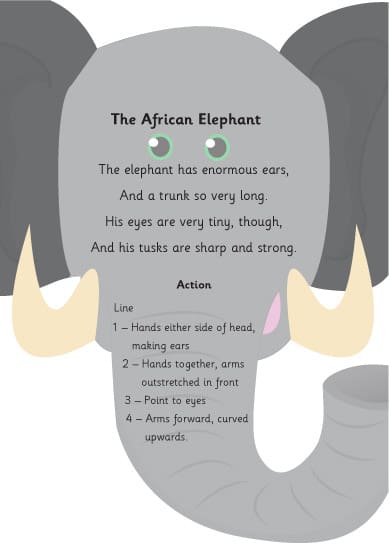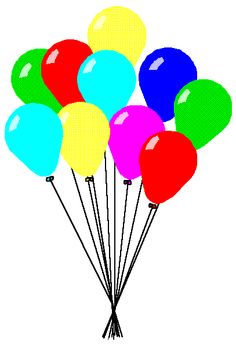We read with prosody!
Throughout the day, the children have many opportunities to read and be read to. As part of our daily sessions, we focus on using prosody. The children are quite accustomed to this skill now and can confidently add expression, where appropriate, to really bring their reading to life. The class have listened to lots of prosody being modeled by the adults so why not try this at home?
This week’s poem was yet another chance to showcase this important reading skill.
Help at home by listening to the poem being read by Mrs Freeman. Ask your child if they can hear some prosody being used and can they read the poem to you using their own expressive voices?
Prosody is the rhythmic and intonational aspect of speech that manifests as expressive reading. It comprises timing, phrasing and intonation, and helps to convey meaning and add ‘life’ to reading

Mass in Maths
This week, the children have been introduced to mass for the
first time. They started by holding different objects to compare them, using the language of “heavier” or “lighter”. Then, the class used balance scales
to check their comparisons and showed a good understanding that
the heavier object is lower on the balance scale.
Next, the children used a variety of resources (cubes, stones and sticks) to measure the mass of an object.
The class learnt that when a scale is balanced, objects have the same mass.
The mass of my stone is equal to the mass of 10 sticks. Vincent
The mass of the water bottle is equal to the mass of 9 cubes. Malcolm






Help at home
Look at the websites below with your child. Collect items from around the home, or outside, to compare mass.
RE – Why does Easter matter to Christians?
In RE lessons, we have been asking a BIG question!
“Why does Easter matter to Christians?
Easter is a very special time for Christians when they remember the last week in the life of Jesus and their most important belief—that he came alive again after his death.
Ask your child about this question. Can they tell you why Easter is such an important time of year for Christians?
To complete this learning, we created an Easter Garden. The children named all of the religious symbols in the garden and could say what each one represented.






We would like to wish all of our children and their families a very happy and healthy Easter break.
Help at home by going on a walk and look for signs of Spring. Look out for blossom, buds, new leaves appearing. Talk about how these are all signs of new life.
Happy Easter!
On Wednesday, we went to church for our Easter service.
Reception and Key Stage 1 did a fantastic job of singing the Easter Chicken song we have been practising.
Some of Year 2 also read beautifully as well.

We hope everyone has a lovely Easter break.
The Tiger Who Came to Tea
The children have been enjoying The Tiger Who Came to Tea by Judith Kerr.

Without seeing the book and using a few props, the class predicted what the story might be about.
I predict that…..
someone is having food
they will be drinking tea
a toy tiger will be the main character
this story takes place in a house
an animal has escaped from the zoo
the tablecloth means there will be a meal
After reading the book, the children answered some retrieval questions.
Retrieval is a reading skill where information is picked out from a text in order to answer questions about it.
Next week, the class will be writing their own narrative. Instead of a tiger that comes to tea, they can change the animal to one of their own choice (perhaps their favourite soft toy).
Finally, to celebrate all their hard work, we will be holding our own ‘mini’ tea party next Thursday morning. The children are invited to bring in their chosen soft toy and drinks and snacks will be provided.
Maths: Grouping tens and ones
Today, we have been looking at making groups of tens and ones. The children were asked to describe a number by the number of
tens and ones the number is made from.
The class used different representations of the tens and ones which were not always in place value order.
The children needed to count the number of groups of 10 and then
the ones to find the total.
. Here there are 3 groups of ten and one 1 – 31
Using Base 10 is useful, as it gives children no option other than to count tens and ones, since they cannot split the ten apart.
misconception 46
Here the ones are pictured before the tens. Children need to still count the groups of ten first and then add on the ones.



Help at home by counting in tens. Try grouping objects into tens and ones. Can your child write the number correctly?
What numbers are represented below?



Yoga
Year 1 have been enjoying learning some yoga with our expert ‘Mrs Bye’. The children have used breathing exercises and relaxation techniques to create a relaxed and calm environment. Perfecting a pose and improving their balance and flexibility has enabled each child (and adult) to really enjoy the moment.






Living and Learning: Being similar and being different
During our Living and Learning lesson, we thought about how we are all similar and how we are all different.
To help us to understand differences we enjoyed the story of Elmer the Elephant.
Though he mighttemporarily want to be just like all the other grey elephants, Elmer realises that being his own colourful self is far more enjoyable – and everyone loves him, just the way he is.
It’s OK to be different.I like being me.There is no one else like me. I am special!





Design and Technology: Fresh Fruit Salad
Yesterday, we all made a delicious, healthy fruit salad.
There were lots of skills on show during the preparation such as;
- peeling by hand
- draining through a colander
- segmenting
- claw grip (using a fork to secure the fruit)
- bridge hold
- measuring liquids
- mixing














Why not make this again at home and encourage your child to use the correct cookery skills.
Ingredients
(serves 6)
1 banana
1 apple
1 orange/satsuma
strawberries
seedless grapes
1 kiwi fruit
2 x 15ml spoons orange juice
Weekly Poem
Each week, the children listen to and enjoy a poem. We rehearse the verses daily and read it together. The class participate in short discussions about the text and any particular favourite words or phrases.
By recognising the patterns of rhythm and sound, used in poetry, helps to read using prosody. (reading aloud with fluency and expression)
In class, an adult will model good prosodic reading by reading aloud and adding emphasis to particular words and phrases which can really bring a text to life.
Once children have listened to the the adult example, they then practice reading aloud to one another, responding to the modeled cues. It has been fantastic to hear to the children repeating parts of the poem using prosody effectively.
Here is the poem for the upcoming week .
Help at home by listening to the poem. Model reading it using some prosody and your child can echo read with you.
Cats
Written by Eleanor Farjeon
Narrated by Mrs Freeman
Cats
Any table, any chair
Top of piano, window-ledge,
In the middle, on the edge,
Open drawer, empty shoe,
Anybody’s lap will do,
Fitted in a cardboard box,
In the cupboard, with your frocks-
Anywhere! They don’t care!
Cats sleep anywhere.